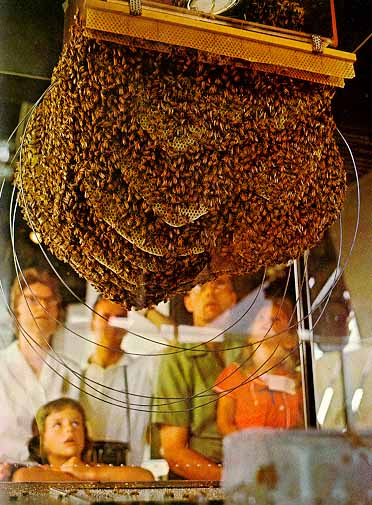Man the Provider
Expo 67 devoted seven acres for the theme of agriculture. Man the Provider, located beyond the Soviet pavilion where canals wound into an area, featured nine pavilions grouped around the Sun Acre. These pavilions were devoted to the frightening problems of the population explosion and undernourishment in many undeveloped countries. |
Nine pavilions were grouped around the Sun Acre. |
A huge dial of a clock in the first pavilion counted off the seconds, reminding visitors that each tick represented two new mouths to be feed. Eight screens showed hunger throughout the world. The second pavilion retraced the slow steps by which man learned, over the centuries, to control the forces of nature, and harness animals for both work and food. The next two pavilions reminded visitors that only 3% of the Earth's surface can be cultivated; the rest is water, desert, mountain and ice. Displays showed the latest irrigation methods, controls against insects, weeds and disease.
The fifth pavilion drew the visitors attention to the strange problem of modern agriculture. Farm management required making important decisions about improving the soil, rotating crops, selecting equipment, planning labor and maintenance and marketing. The next pavilion displayed the range of complicated machines used in modern agriculture.

| Bees at work producing honey. |
Poultry farming, livestock breeding and milk production were the subjects of the last three pavilions. Displays concentrated on the latest in feeding methods, scientific cross-breeding and artificial insemination. The visitor saw a machine which candled, graded and packed eggs. Chicks were hatched in an automatic incubator, and twenty five fine dairy cows showed the importance of the dairy industry.
A miniature fairy tale farm, made especially for children, was stocked with ducks, goats, donkey and Shetland ponies. Explanations told of recent research that working animals lived longer because they were less bored and that they respond better to gentle and rewarding stimuli than to punishment.